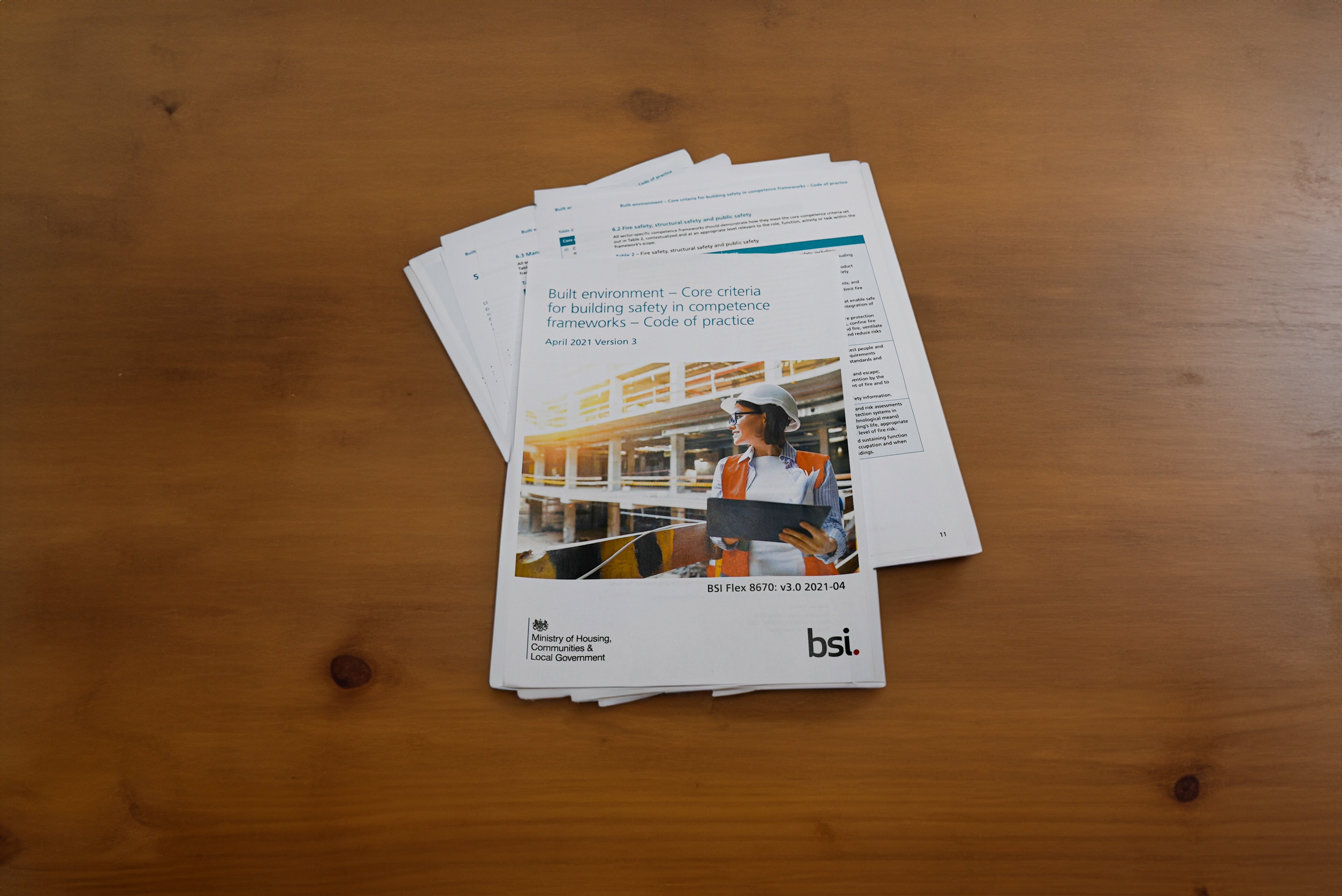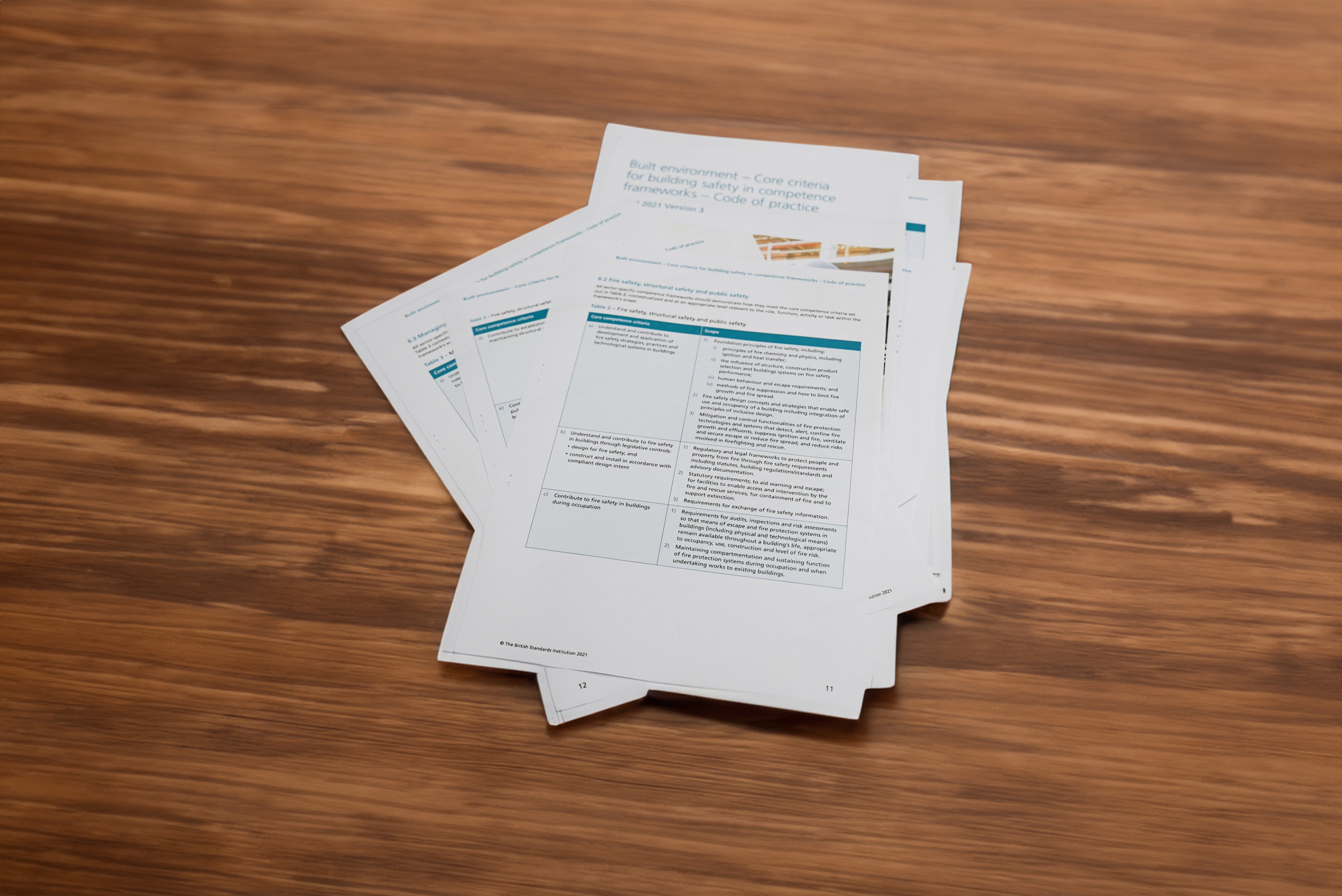In the built environment, ensuring fire and life safety is not merely a legal obligation, but a moral imperative, as starkly demonstrated by the 2017 Grenfell Tower tragedy. The Grenfell Tower fire serves as a reminder of the catastrophic consequences that can result from inadequate fire safety measures. It highlights the need for stricter safety regulations, heightened vigilance in building design, specification, and product selection, and robust measures during construction. The Grenfell Tower tragedy is a stark reminder that negligence or complacency in fire safety can have devastating consequences.
From a regulatory standpoint, the emphasis of fire safety standards and guidelines is primarily centred on the preservation of human lives and the prevention of death or severe injury resulting from fires. These regulations prioritize the well-being and safety of individuals over the protection of property. This fundamental principle arises from a recognition of the irreplaceable value of human life and the moral obligation to prioritize it.
As construction projects evolve, fire safety risks accumulate, underscoring the importance of clear understanding and effective communication among all stakeholders. This article provides general guidance on fire and life safety in construction from BSI Flex 8670 v3.0 2021-04, a competence framework that covers fire safety, structural safety & public health across the building life cycle. It addresses the characteristics of high-risk buildings, the significance of building design, specification, and product selection, as well as the crucial considerations during the construction phase.
To promote building safety, it is necessary for all participants in the construction process to clearly understand:
- the specific responsibilities for fire safety associated with their role or task;
- how their role interfaces with other fire safety considerations and other disciplines; and
- how to communicate and manage risk within and between building owners, user organizations, and teams.
This article will go through:
- Characteristics of High-Risk Buildings
- Building Design, Specification, and Product Selection for Fire Safety
- Regulations and Standards
- Fire Safety Risks during Construction
- Construction Competence in Managing Fire Safety Risks
- Conclusion
Characteristics of High-Risk Buildings
It is important to promote understanding of the characteristics that make any building higher risk in terms of occupant safety. These characteristics are fundamental to establishing effective fire safety strategies which influence the design and construction of a building, and subsequently determine the way in which the building is to be managed to remain safe in occupation.
- Height: Taller buildings pose greater challenges for evacuation and fire-fighting operations due to longer evacuation times, logistical difficulties for emergency services, and potential construction defects. Therefore, when it comes to evacuation during emergencies, higher buildings generally require more time for occupants to exit safely. This additional time is critical for ensuring everyone can escape without harm. Additionally, regular inspections and maintenance work in high-rise buildings should be conducted to spot any potential fire-safety risks.
- Physical constraints: Physical aspects such as limited access for emergency services to enter, poor waste management arrangements, limited internal circulation, and fewer stairs and lifts can impact fire safety. Consideration must also be given to the proximity between buildings as this affects the rate at which the fire spreads.
- Occupation and Use: Buildings where people sleep are considered higher risk due to longer response times and delayed emergency services intervention. The type of occupants, including vulnerable individuals, also affects life safety risk.
- Familiarity: The level of familiarity occupants have with a building plays a crucial role in fire safety. Regular users or permanent residents should be well-acquainted with their responsibilities and the procedures for evacuating the building in case of a fire. However, for buildings frequented by temporary residents, such as hotels or hostels, or occasional users, different strategies are required. These individuals may not be familiar with the building's layout or emergency procedures.

These characteristics significantly influence the development of fire safety strategies, building design, construction, and ongoing management, all aimed at safeguarding the well-being of occupants and protecting property. Therefore, it is imperative to take these factors into account when establishing competency requirements for fire safety.
High-risk buildings typically necessitate stricter safety regulations and standards. In this context, M&E contractors have a crucial responsibility to ensure that their systems and installations fully adhere to these regulations. To effectively mitigate the heightened risks associated with such structures, it is essential to employ high-quality fire-protected and fire-tested products. Considerations related to factors like occupant types and building height should inform decisions such as the fire-resistance capabilities of a particular product, as these factors can allow for greater evacuation time.
In simple terms, the more ‘high-risk’ a building is, greater attention needs to be given to ensuring it is fire safe. Failure to meet these standards and implement these safety measures could lead to severe safety violations and result in legal repercussions.
Building Design, Specification, and Product Selection for Fire Safety
The design of a building plays a crucial role in ensuring fire safety. This can be broken down into two main aspects: one for new buildings and another for existing ones. In this article, we will delve into the significance of building design in fire safety without the use of section numbers.
New Buildings:
When it comes to new constructions, the design process offers an opportunity to comprehensively incorporate fire safety measures throughout the entire structure. This encompasses various elements, including life safety systems like emergency lighting, alarms, evacuation systems, standby power, and public address systems. Achieving safe performance standards for the building's entire lifecycle requires skilled designers to collaborate effectively, alongside vigilant oversight by building control or standards organizations.
Existing Buildings:
For existing buildings, it's essential to understand the original design's safety provisions, any changes made since its construction, and how these alterations impact its ongoing safety, operation, and maintenance.
Design Elements for Fire Safety:
The design process encompasses multiple facets that influence fire safety, including:
- a) Ensuring safe means of escape, such as staircase placement and smoke prevention measures, to enable quick and safe evacuation during a fire.
- b) Considering the building's shape, size, and layout to facilitate easy access for firefighting services.
- c) Evaluating the fire performance of materials, products, and systems and using them appropriately in the building's construction.
- d) Implementing passive fire protection and compartmentation to contain and prevent the spread of fires.
- e) Incorporating specialist advice from active fire protection systems and firefighting services for early detection, suppression, and support to firefighters.
- f) Addressing human factors related to fire safety, including the causes of fires and human behaviour during fire incidents.
- g) Considering day-to-day operational factors that affect fire safety and first responders' ability to intervene effectively.

Regulations and Standards:
Building regulations and standards outline the minimum requirements for life safety objectives, but additional goals, such as property protection or business resilience, may also be desired. Alternative fire safety approaches may be acceptable but often require fire-engineered solutions that demand high levels of expertise. Commonly adopted building standards include BS 9991 for residential buildings, BS 9999 for non-residential buildings, and BB 100 for schools.
Competence in Design Work:
A wide range of individuals and businesses participate in design work, and all must ensure that their designs prioritize fire safety and consider the interconnected aspects of the building. This includes architects, engineers, interior designers, building surveyors, quantity surveyors, specialist consultants, contractors, or subcontractors involved in design activities.
Key Fire Safety Risks in Design:
Several critical fire safety risks are identified during the design phase, including:
- a) Designers unaware of their responsibilities.
- b) Designers exceeding their competence limits.
- c) Neglecting regulatory requirements and good practice recommendations.
- d) Relying on assumptions instead of evidence-based performance.
- e) Overreliance on others to identify and resolve fire safety issues.
- f) Inadequate recording of fire safety strategies and decisions.
- g) Poor coordination with other designers.
- h) Inadequate management of waste and storage to avoid compromising fire safety.
- i) Failing to consider design risks associated with construction, maintenance, use, or operation.
- j) Inadequate quality checks on workmanship.
Design Competence in Managing Fire Safety Risks:
Competence is vital for managing fire safety risks during design, including the ability to:
- a) Comply with or exceed minimum fire safety requirements.
- b) Understand the fire performance of materials, products, and systems.
- c) Coordinate activities with other designers, contractors, and subcontractors for holistic building safety.
- d) Maintain comprehensive records throughout the building's lifecycle.
Competence of designers is important in assessing and managing fire safety risks that arise from interactions at the construction stage, particularly where changes to the design are proposed for cost management purposes. Equally, it is important that designers also recognize where specialist or more competent advice is required in assessing the impact of these changes on building safety and appoint a suitably competent person to assess impacts on fire safety and ratify the amended design.
Competence in design work is crucial, whether for new constructions, minor alterations, or major refurbishments of existing buildings, to ensure that fire safety remains a top priority at every stage of a building's life.
.png?width=4133&height=2761&name=MicrosoftTeams-image%20(89).png)
Fire Safety Risks during Construction
Several critical points during the construction process can compromise safety standards. These risks, whether they occur individually or in combination, can have a significant impact on the overall safety of a building. If these risks are encountered repeatedly throughout the lifecycle of a building, it can seriously compromise its fire safety. Here are a few risks associated with the construction phase that may affect the fire safety of your project:
- Inaccurate or inadequate information about fire performance of products and systems.
- Omitted products.
- Incorrectly specified or poorly installed products.
- Substitution of products with lower fire safety performance.
- Use of inadequately tested products or those with a short lifespan.
- Substitution of products without assessing their impact on fire safety.
- Failure to consider components' performance as a system.
- Inadequate commissioning of fire safety systems.
- Poor management of interfaces between trades affecting fire safety.
- Damage to compartmentation during construction or maintenance.
- Cost-cutting without reassessing impacts on fire safety.
- Design work by incompetent designers.
- Re-design or changes without understanding their impact on fire safety.
- Inadequate quality management and oversight.
- Multiple subcontracting levels affecting communication.
- Fragmented supply chains impacting information management.
- Failure to provide temporary fire safety measures.
- Inadequate support for building services.
- Failure to sequence works properly, causing installation problems later.
To mitigate the risks, it is essential to establish strong links and effective communication between the design and construction phases of a project. The design intent must be clearly documented and conveyed to the construction team. Ideally, buildings should be constructed in accordance with the original design intent to avoid potential reductions in fire safety due to redesigns during construction. If changes to layout, materials, products, or systems become necessary, these changes should be re-evaluated for their potential impact on fire safety. If needed, additional measures should be implemented. Although changes during construction may not always lead to a decrease in building quality or fire safety, a culture of making such changes without proper documentation or scrutiny can lead to unsafe construction practices.
Construction Competence in Managing Fire Safety Risks
It is crucial to manage the competence of site staff, subcontractors, and operatives involved in the construction process. Work should be carried out by individuals who are competent and qualified, and they should take responsibility for both the quality and safety of their work. While certain defects in critical fire safety measures may be discovered during construction or regulatory audits, there are elements that are concealed or difficult to inspect. These hidden elements could have catastrophic consequences if they fail to perform as intended.
Consideration must be given to the type and level of competence required to address and mitigate these risks effectively. This may encompass:
- a) The capacity to appoint, verify, oversee, and ensure the competence of individuals involved in the construction process.
- b) Appropriate knowledge of construction technology, systems, and products, as well as their relevance in achieving the desired level of fire safety performance.
- c) Familiarity with and the ability to execute or oversee work to meet or surpass regulatory requirements.
- d) Awareness and effective management practices to control fire risks during ongoing work and when work is temporarily halted (e.g., overnight).
- e) The ability to manage costs and timelines without compromising safety.
- f) Effective planning of construction activities to ensure that the right materials and products are available at the correct locations and times.
- g) Competence in ensuring that the quality of work adheres to the required standards.
- h) Capability to identify emerging fire safety risks and take corrective actions to address any underperformance.
- i) Skill in managing changes in construction to ensure they do not compromise fire safety, including knowing when to reevaluate against the original design intent.
- j) The necessity to provide fire safety information to the client or building owner/operator in a format that they can readily utilize.

Conclusion
In conclusion, prioritizing fire and life safety in construction is not just a regulatory requirement but a moral imperative. It is essential to recognize the significance of human lives and the responsibility we bear in preserving them. By adhering to fire safety measures, promoting competence, and actively addressing potential risks, we can create safer environments for construction workers and building occupants alike, ensuring that the legacy of our constructions is one of safety and well-being.


